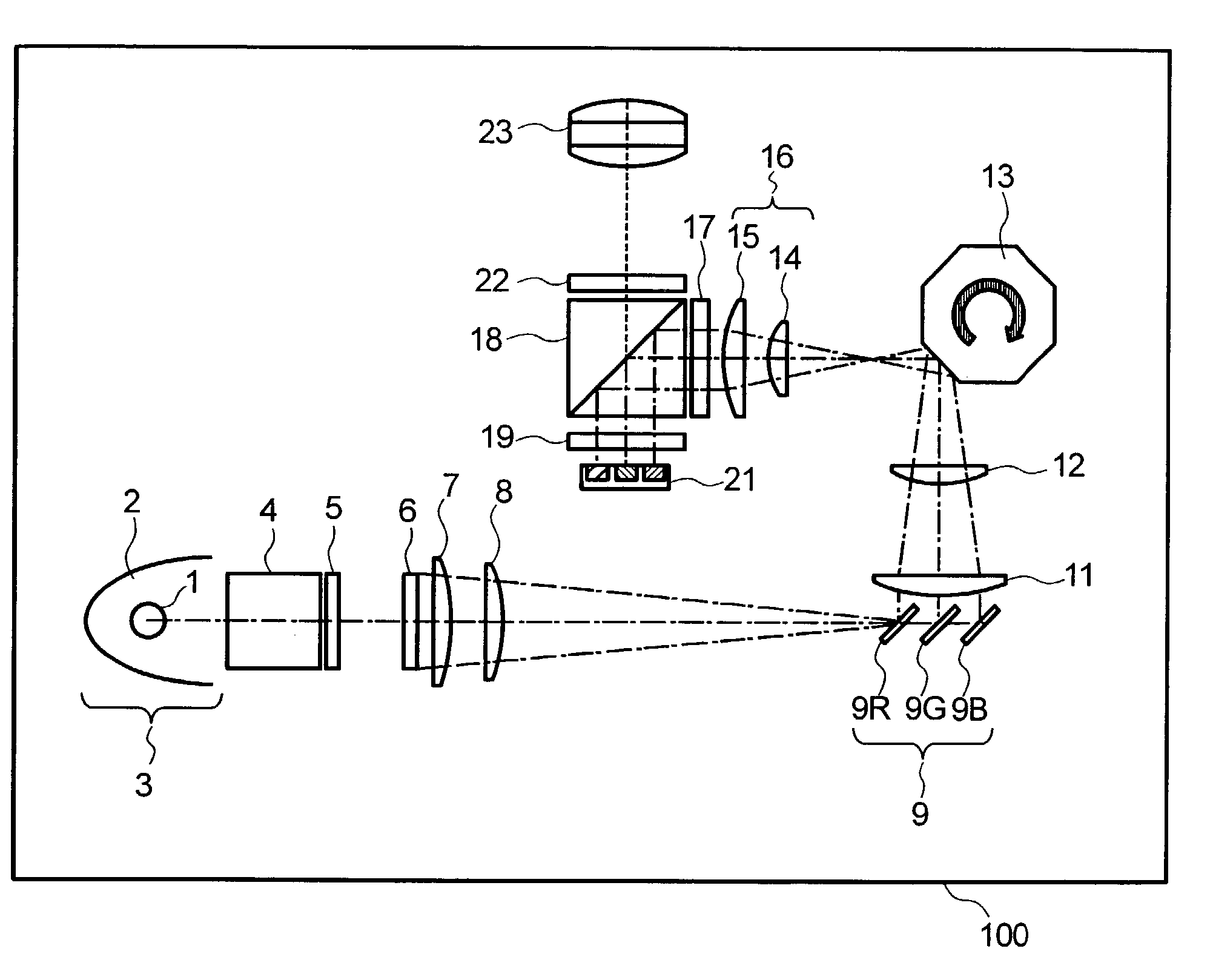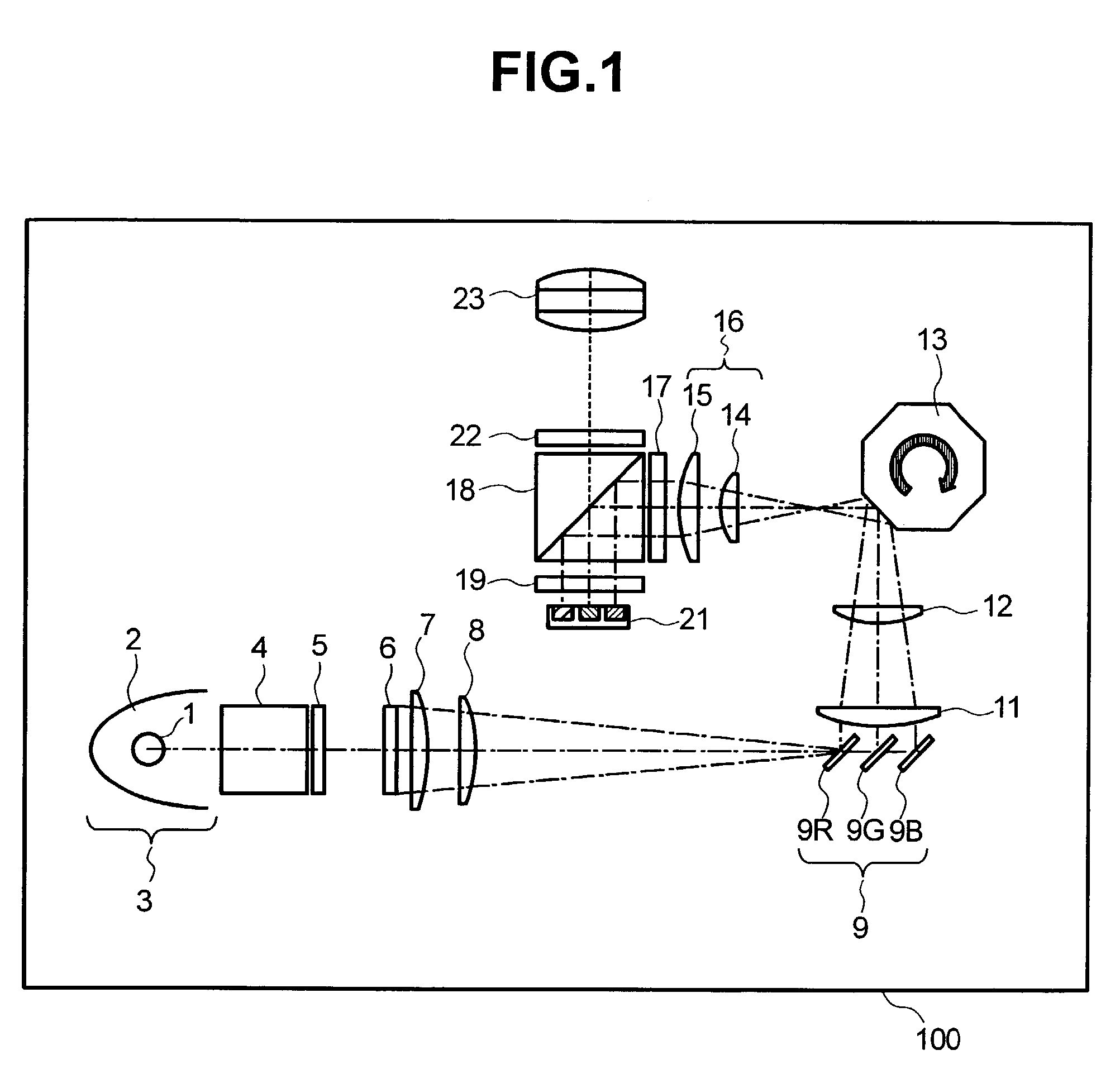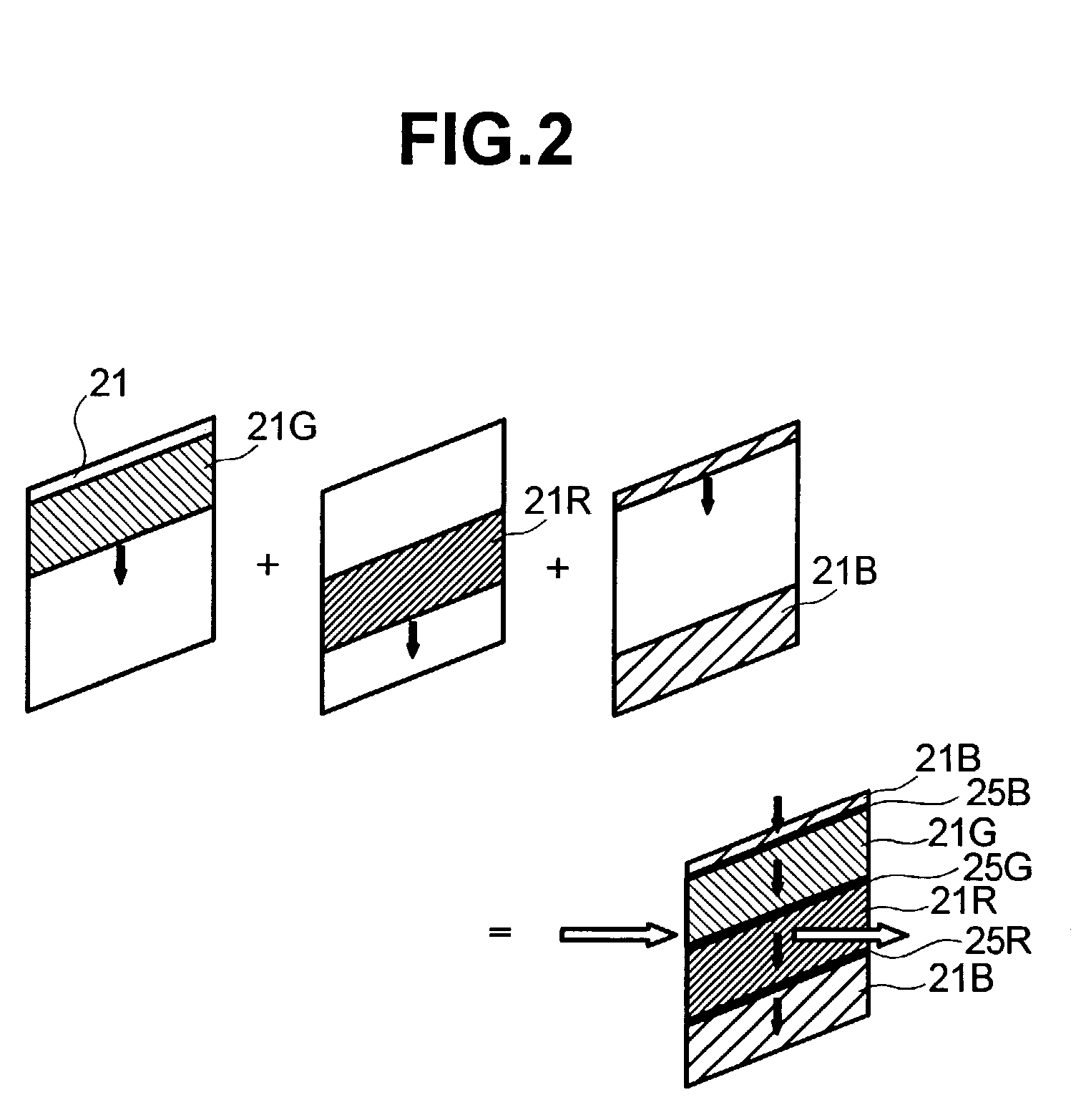Projection type image display apparatus
- Summary
- Abstract
- Description
- Claims
- Application Information
AI Technical Summary
Benefits of technology
Problems solved by technology
Method used
Image
Examples
first embodiment
[0025]FIG. 1 shows the general structure of an optical unit included in a display device 100 according to the present invention. The display device 100 is a projection-type television according to one embodiment of the present invention.
[0026]As shown in the figure, light from a lamp unit 3, which is obtained by reflecting light from a lamp (arc) 1 with a reflector 2, passes through a polarizing beam splitter 4 (hereinafter called PBS) to convert the light to either S polarized light or P polarized light, then the polarized light enters a first lens array 5 to form plural secondary lamp images. Then, the light from the first lens array 5 passes through a second lens array 6 which includes a plurality of condenser lenses, lies in the vicinity of the area where plural secondary lamp images are formed, and forms an image of each lens of the first lens array 5 on a liquid crystal panel 21 (hereinafter called the “panel” or “image display device”) which will be mentioned later.
[0027]The ...
second embodiment
[0061]FIG. 6 is a perspective view of an optical unit according to the present invention. The elements equivalent as those shown in FIG. 1 are designated with the same reference numerals and their description is omitted here.
[0062]As shown in the figure, the outer wall of the reflector 2 is partially cut so that a rectangular beam is emitted. Part of the beam which has entered a polarization converter 61 passes through the polarization converter 61 and exits as P polarized light; then, after it is converted into S polarized light by a ½λ plate, it enters the first lens array 5. Other part of the beam is reflected by the first reflective surface 61a of the polarization converter 61, and further reflected by its second reflective surface 61b. It also enters the first lens array 5 as S polarized light. Then the light which has passed through the first and second collimator lenses 7, 8 is separated into R, G, and B light rays by the color separation mirrors 9 and the light rays go to th...
third embodiment
[0064]FIG. 7 is a perspective view of an optical unit according to the present invention. The elements equivalent as those shown in FIG. 1 are designated with the same reference numerals and their description is omitted here. Numeral 79 represents a color separation mirror. The color separation mirror 79 may be prepared as follows: a glass plate assembly, which consists of three glass plates with dichroic mirrors between glass plates and on the outer face of an outer glass plate, is cut into a strip in a way that the incident light side is almost perpendicular to light rays; then it is polished.
[0065]In comparison with the case as shown in FIG. 1 where the dichroic mirror 9R for R light, dichroic mirror 9G for G light, dichroic mirror 9B for B light are provided in the air, the color separation mirror 79 in this embodiment, which is made of glass and dichroic mirrors, is equal in the physical distance between mirrors, but different in the optical length. Let's assume that c represen...
PUM
 Login to View More
Login to View More Abstract
Description
Claims
Application Information
 Login to View More
Login to View More - R&D
- Intellectual Property
- Life Sciences
- Materials
- Tech Scout
- Unparalleled Data Quality
- Higher Quality Content
- 60% Fewer Hallucinations
Browse by: Latest US Patents, China's latest patents, Technical Efficacy Thesaurus, Application Domain, Technology Topic, Popular Technical Reports.
© 2025 PatSnap. All rights reserved.Legal|Privacy policy|Modern Slavery Act Transparency Statement|Sitemap|About US| Contact US: help@patsnap.com



